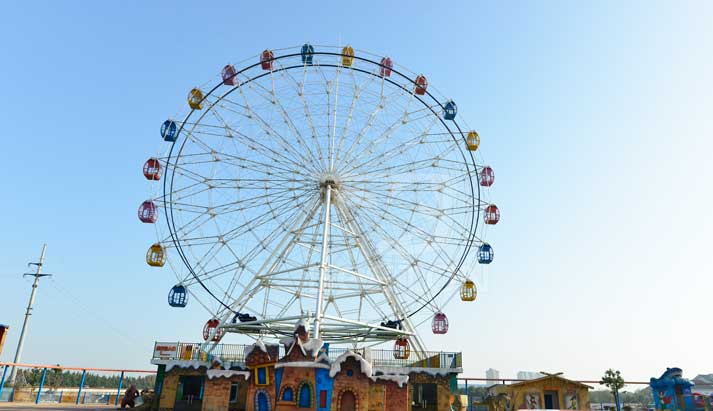Choosing the suitable height for a Ferris wheel in a park is a crucial decision that involves a balance between various factors to ensure a memorable and enjoyable experience for visitors. The height of the Ferris wheel can greatly impact the park’s aesthetics, safety, capacity, and overall appeal. Here’s a comprehensive guide to help you make an informed decision:
1. Park’s Theme and Aesthetics:
Consider the overall theme and aesthetic of the park. The Ferris wheel’s height should complement the park’s design and atmosphere. For a whimsical or fairytale-themed park, a taller Ferris wheel that made by Beston Amusement Park Rides Supplier might add to the magical ambiance, while a smaller wheel could suit a more intimate or vintage setting.
2. Cityscape and Landscape:
Evaluate the park’s location and surroundings. A taller Ferris wheel might provide breathtaking views of the city skyline or nearby landscapes, making it an attraction in itself. Conversely, a shorter wheel might still offer enjoyable views without overpowering the park’s surroundings.
3. Capacity and Ride Experience:
The height of the Ferris wheel affects the number of cabins or seats it can accommodate. Taller wheels generally have more cabins and can handle larger crowds, leading to shorter waiting times and improved visitor satisfaction. Consider the expected park attendance and choose a height that optimizes the balance between capacity and ride experience.
4. Safety Regulations:
Adhere to safety regulations and guidelines set by relevant authorities. Taller Ferris wheels might have stricter safety requirements due to factors like wind resistance and emergency evacuation procedures. Ensuring compliance with safety standards is paramount to visitor well-being.
5. Demographics and Target Audience:
Understand your park’s target audience. Families with children might prefer a moderate-height Ferris wheel, while thrill-seeking visitors could be drawn to a taller, more exhilarating ride. Consider the demographic mix to cater to different preferences.
6. Park’s Footprint:
Assess the available space within the park for the Ferris wheel. Taller wheels generally require more space for their construction and operation. Ensure the chosen height fits comfortably within the park’s layout without causing congestion or negatively impacting other attractions.
7. Unique Selling Point (USP):
Consider how the Ferris wheel can become a unique selling point for the park. A particularly tall Ferris wheel could become an iconic landmark, and the ferris wheel price is expensive. Drawing visitors from far and wide. Alternatively, a creatively designed wheel with unique features could make it stand out even at a moderate height.

8. Maintenance and Operating Costs:
Taller Ferris wheels may require more maintenance and have higher operational costs due to their complexity. Factor in these ongoing expenses when deciding on the height, especially if the park is working within budget constraints.
9. Accessibility and Inclusivity:
Ensure the Ferris wheel is accessible to all visitors, including those with mobility challenges. Consider features like wheelchair-friendly cabins and boarding procedures to enhance inclusivity.
10. Market Research:
Conduct thorough market research to understand visitor preferences and expectations. Surveys, focus groups, and studying similar attractions in other parks can provide insights into the ideal height for the Ferris wheel.
In conclusion, choosing the suitable height for a Ferris wheel involves a thoughtful analysis of various factors, including the park’s theme, location, capacity, safety, target audience, available space, and maintenance costs. By considering these aspects and striking a balance between them, you can select a height that enhances the park’s appeal and provides a delightful experience for all visitors.
